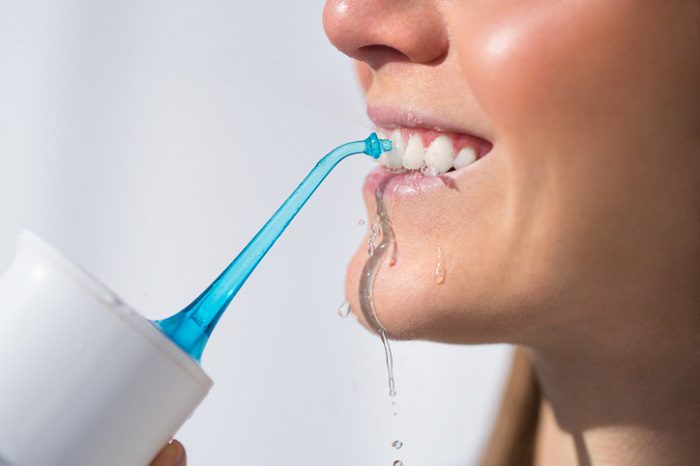Flossing is a crucial step in your oral hygiene routine. The process cleans plaque and other harmful residues from the spaces between your teeth where a toothbrush cannot reach properly. If these particles remain on your smile, you might develop cavities and other serious dental problems.
Traditional string floss is an effective way to clean this part of your mouth. But you can also use a water flosser to boost efficiency in this process in conjunction with the rest of your oral hygiene regimen. This device generates a stream of water that you aim and spray to clean between your teeth.
However, in order to maximize oral health benefits from this tool, you must know how to use it properly. Read on to find advice from your dentist on using your water flosser to its fullest potential.


Choose Appropriate Device Settings
The water flosser comes with several settings that affect the speed and pressure of the water spray it generates. Begin with the lowest option so that you can get used to the feeling. Then you can adjust the pressure according to your comfort levels.
The flosser also features a few different tips that you can interchange based on your unique oral health needs. This tip is where the water spray comes from. For instance, you can choose the standard tip to clean between teeth, the tip designed to navigate around braces or other fixed oral appliances, or one that targets deep in the gum pockets.
If you would like advice about which type of water flosser will suit your goals, consult with your dentist. They can provide further details about this oral hygiene tool in relation to your specific dental health history.
Maneuver Your Water Flosser with Purpose
As with traditional flossing, you will get your teeth cleaner with this tool when you maneuver it with purpose. In order to see where to aim your water flosser, you may want to use it in front of a mirror. You should also use a water flosser over a sink to avoid making a mess.
To prevent splashing the water spray from the flosser, keep the tip under your lips. Lean over the sink and let the accumulated water drip out of your mouth and into the sink as you floss. You may also want to try a cordless water flosser, which you can use in the shower to even further avoid making a mess in your bathroom.
You can start by cleaning the spaces between the teeth at the back of the mouth and then work your way forward. Make sure to aim the tip at these gaps as well as your gumline for a thorough cleaning.
Just like with traditional flossing, you should complete this routine at least once a day. This ensures you do not accumulate plaque and other build-ups that would otherwise hurt your smile. Make sure you also brush your teeth twice per day and attend routine dental cleanings to maximize oral hygiene.
